BASONOVA Members and BAF subscribers in good standing may request links to specific lectures in this archive by emailing their selection to: info@basonova.org
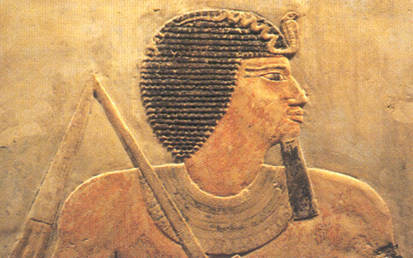 |
Wednesday, July 12 at 8 pm EST via Zoom
The King is Dead, Long Live the King: Murder, Poetry, and Scribal Culture in Ancient Egypt
Margaret Geoga
Sponsored by the DC Chapter of ARCE
The Teaching of Amenemhat is the only work of ancient Egyptian literature to depict the murder of a king. Narrated by the assassinated pharaoh Amenemhat I, the poem is unique in both its dark subject matter and its great popularity among ancient readers in Egypt and Nubia, particularly among scribes and scribal apprentices.
|
While most of the previous scholarship on “Amenemhat” has focused on the poem’s composition, this lecture, in contrast, shifts the focus from the birth of the poem to its afterlife, in order to investigate who was reading “Amenemhat” in antiquity, how its readers interpreted the poem, and how and why interpretations changed over the approximately 1000 years of the poem’s circulation.
This presentation will include an exploration of how the education of scribes led to differences in their interpretations of the poem, and an examination of what happened over time to account for these textual changes.
Margaret Geoga is Assistant Professor of Egyptology at the University of Chicago
|
|
Body: CID/CPROD: URL: Customer Name: Scope of refund request: Products: Open work-cases: Call backs need to be set for 1-2 business days.
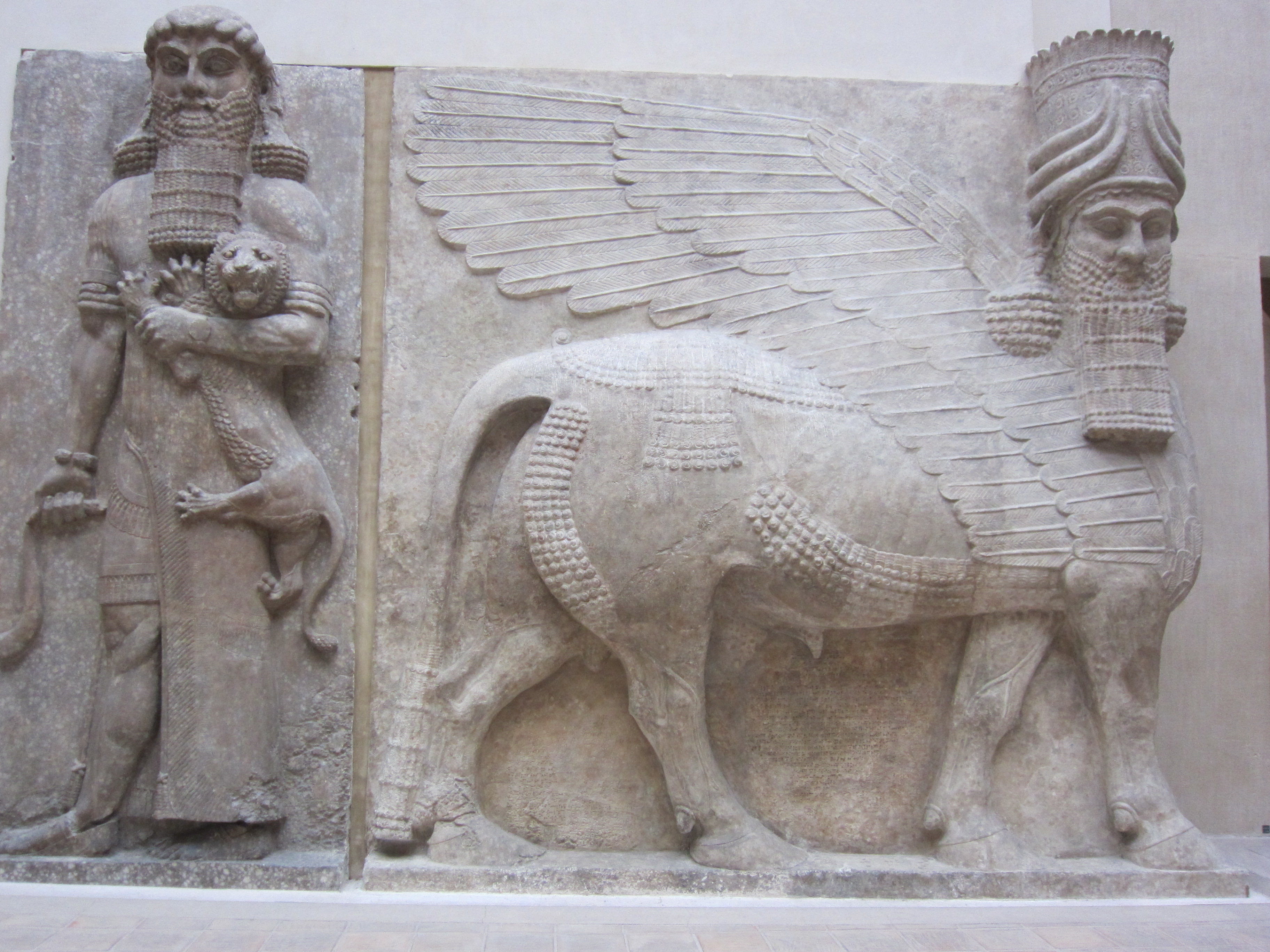 |
Wednesday, August 23, 2023 at 8 pm via Zoom
The First Half of History: A Virtual Tour of the Yale Babylonian Collection
Ekhart Frahm
Agnete Lassen
The Yale Babylonian Collection, founded in 1911, is one of the world’s main repositories of cuneiform texts, cylinder seals, and other artifacts from ancient Mesopotamia.
This virtual tour will provide glimpses into three millennia of Mesopotamian history and culture. Through a close examination of some of the collection’s most intriguing pieces – among them a manuscript of the Epic of Gilgamesh, a cuneiform letter sent by Ramesses II, and an early catalogue of medical treatises – participants will gain insights into the origins of elements of civilization that are still very much with us, from literary authorship (first ascribed to a woman) to counting, cooking, healing, and spying.
|
This presentation will explore the connections between Mesopotamia and the world of the Bible and demonstrate how new technologies help us better understand some of the most ancient testimonies of human history.
Ekhart Frahm is Professor of Near Eastern Languages and Civilizations at Yale University.
Agnete Lassen is Associate Curator of the Yale Babylonian Collection at the Yale Peabody Museum.
|
|
|
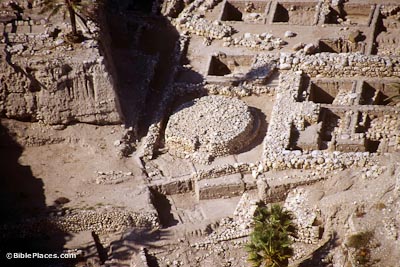 |
Wednesday, May 20, 2020, at 8 PM via Zoom
Digging Up Armageddon: The Search for the Lost City of Solomon
Eric Cline
In 1925 archaeologists from the University of Chicago’s Oriental Institute began a fourteen-year excavation of the ancient site of Megiddo (biblical Armageddon), one of the most important cities in biblical times. A consequential 15th century B.C.E. battle was fought there by Pharaoh Thutmose III against a Canaanite coalition. Another famous battle was waged there in 609 B.C.E. between Egypt and the Kingdom of Judah, in which King Josiah fell.
|
|
Unfortunately, official publications from the Oriental Institute provide scant details behind their amazing discoveries, which include "Solomon's Stables" uncovered among twenty-six layers of ruins.
Some of the more compelling episodes in Chicago's search for Solomon's city at Megiddo will be presented in this illustrated lecture, drawn from a treasure trove of more than three decades worth of letters, cablegrams, cards, notes, and diaries. These materials shed substantial, often surprising, light on the internal workings of the excavations and its discoveries, situated against the backdrop of the Great Depression and the growing troubles of the British Mandate between the two world wars.
Eric Cline is a Professor of Ancient History and Archaeology at George Washington University.
|
|
|
|
 |
Wednesday, June 3, 2020, at 8 PM via Zoom
The First Diasporas: Egypt and Babylonia
Gary Rendsburg
With the destruction of the First Temple in 586 B.C.E., the ancestors of the Jews left the land of Israel in large numbers. Over the course of the next two centuries, we find a considerable amount of archaeological evidence for Jewish life both in Egypt and Babylonia.
|
|
This evidence includes - most remarkably - the outpost of Jewish soldiers and their families at Elephantine, opposite Aswan in the far south of Egypt.
The evidence in Babylonia includes hundreds of cuneiform tablets attesting to Jewish businesses and mercantile interests. These people clearly took Jeremiah's charge (Chapter 29) to heart and successfully reconstructed their lives in exile: Build houses and settle down; plant gardens and eat what they produce. Marry and have sons and daughters; find wives for your sons and give your daughters in marriage so that they too may have sons and daughters. Increase in number there; do not decrease. Also, seek the peace and prosperity of the city to which I have carried you into exile.”
Gary Rendsburg is the Blanche and Irving Laurie Professor of Jewish History at Rutgers University
|
|
|
|
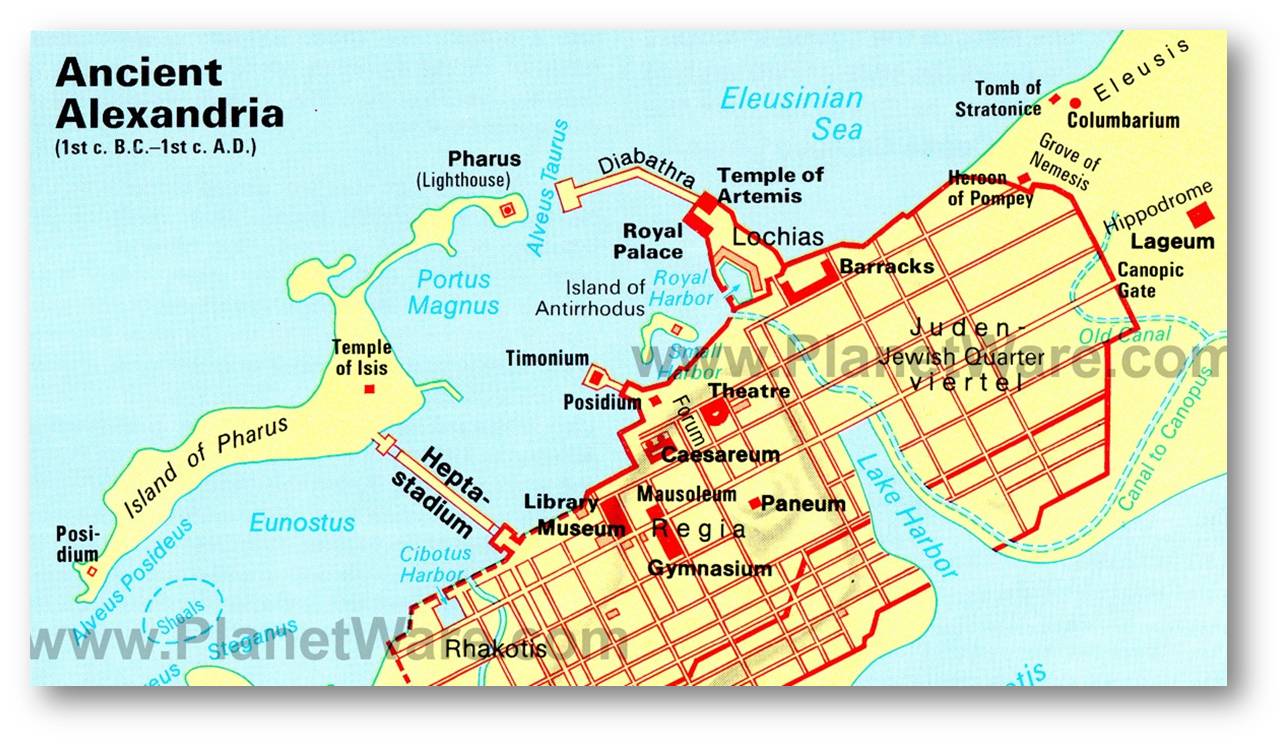 |
Wednesday, June 10, 2020, at 8 PM via Zoom
Septuagint, Synagogue, and Symbiosis: The Jews of Hellenistic Egypt
Gary Rendsburg
The conquests of Alexander the Great brought Hellenism to the entire Near East in the late 4th century B.C.E. No Jewish community reflects the symbiosis of Hellenism and Judaism better than the large and thriving community of Egypt, especially in Alexandria.
|
|
Members of this Alexandria community produced a Greek translation of the Bible, built synagogues (called proseuche in Greek) dedicated to the Ptolemy kings and queens, wrote Jewish literature in Greek, and were fully integrated into the society and the economy. In one case, they even constructed a temple in Egypt (to rival the one in Jerusalem).
Gary Rendsburg is the Blanche and Irving Laurie Professor of Jewish History at Rutgers University
|
|
|
|
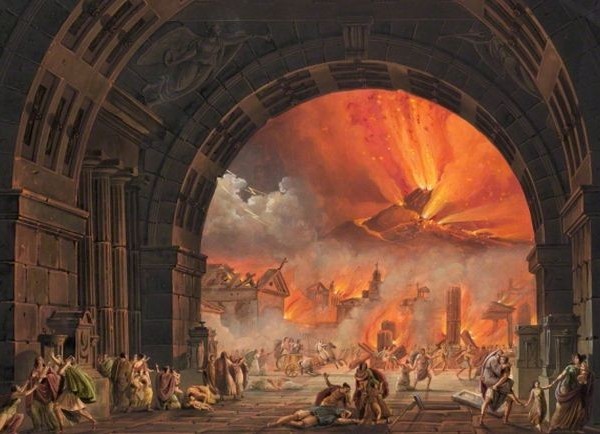 |
Wednesday, June 24, 2020, at 8 PM via Zoom
Pompeii, Herculaneum and the Aftermath of Vesuvius
Steven Tuck
Pompeii and Herculaneum are best known for their utter destruction by the eruption of Vesuvius in 79 CE and for remains preserved by volcanic ash. Less known is that there were survivors of this calamity and about what happened to them.
Do we know which city or region hosted the most survivors? Did they all migrate to other coastal regions, or were they more widely dispersed? What critical social and economic factors guided the decisions of the survivors about where to resettle?
|
Can we actually trace the fate of surviving families and specific individuals in the aftermath of the eruption? Did any regain prominence within the Roman Empire?
This lecture also investigates the Roman government's intervention and response to natural disasters. What was the government’s role, if any, in handling resettlement?
Steven Tuck is a Professor of Classics at Miami University
|
|
|
|
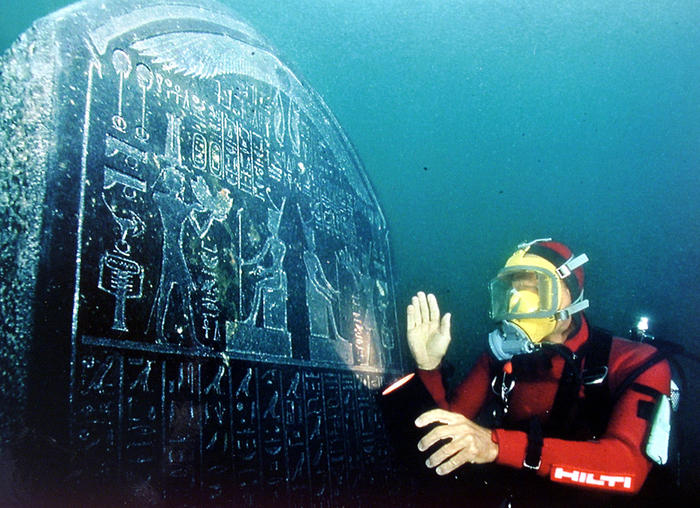 |
Wednesday, July 22, 2020, at 8 PM via Zoom
Treasures of Ancient Egypt: Sunken Cities
Peter Schertz
This event is co-sponsored by the DC chapter of ARCE (American Research Center in Egypt)
The cities of Thonis-Heracleion and Canopus sank into Egypt’s Aboukir Bay some twelve hundred years ago. Once centers of international trade and home to major religious cults and celebrations, these cities were virtually forgotten until the underwater archaeologist, Franck Goddio rediscovered them in 1996.
|
What Goddio found were not only the remains of major religious complexes closely tied to maintaining the legitimacy of the reigning pharaoh and dynastic continuity during the Late Period and Ptolemaic Period, but also a wealth of artifacts associated with the annual celebration of the Mysteries of Osiris that ensured the fertile of the land and Egypt’s well-being.
Peter Schertz will introduce the exhibition Treasures of Ancient Egypt: Sunken Cities, currently at the Virginia Museum of Fine Art, focusing especially on the topic of continuity and change in the art and religion of Ptolemaic and Roman Egypt.
Peter Schertz is the Curator of Ancient Art at the Virginia Museum of Fine Arts
|
|
|
 |
Wednesday, August 5, 2020, via Zoom
Israelite and Persian Perspectives on Babylon's Great Monuments: The Tower of Babel and the Ishtar Gate
David Vanderhooft
The Hebrew Bible is very familiar with the city of Babylon and refers to it more often than any other city beyond Israel. Babylon was understood as the quintessential foreign city. Its massive architecture, particular topography, and learned traditions inspired both respect and condemnation. The story of the “city and tower” in Genesis 11:1–9 even concedes, contrary to the arguments of most interpreters, that the tower was actually completed. It stood, in a literary sense, as the pole around which Israel’s historical narratives revolve.
|
Meanwhile, for the earliest Achaemenid kings of the Persian empire, Babylon offered architectural examples for use in their new imperial style. One structure, in particular, the Ishtar Gate of Babylon, made a dramatic impression and prompted the construction of an exact replica at Tol-e Ajori, a site west of Persepolis excavated in recent years by a joint Italian-Iranian team. The structure at Tol-e Ajori represents a kind of celebration in the brick of Babylon’s cosmic monumentality.
David Vanderhooft is Associate Professor in the Theology Department at Boston College
|
|
|
 |
Wednesday, August 19, 2020, at 8 PM via Zoom
Food, Glorious Food! Home Cooking in Ancient Israel
Cynthia Shafer-Elliott
The subject of food has taken a central role in the cultural stage. There are numerous podcasts, television and radio shows, celebrity chefs, and even entire television channels dedicated to the cooking of food. This trend in food has even spread to the academic arena and has been the topic of much research in various fields, including Biblical Studies and Biblical Archaeology.
|
In this presentation, Dr. Cynthia Shafer-Elliott will talk about the food prepared by the average ancient Israelite household. By utilizing the methods of household archaeology, ethnoarchaeology, and texts from the Hebrew Bible, we will attempt to better understand what and how the Israelites prepared their food on a daily basis.
Cynthia Shafer-Elliott is the Associate Dean, Faculty of Theology and Associate Professor, Hebrew Bible & Archaeology at William Jessup University
|
|
|
 |
Wednesday, September 2, 2020, at 8 PM EST via Zoom
The Blood-Drenched Sea
Alfred S. Bradford
This presentation will begin with highlighting the only physical representation of an ancient sea battle, memorialized in an Egyptian temple relief. This battle featured an array of Sea Peoples contesting with the naval forces of Pharaoh Ramses III early in the twelfth-century B.C.E.
|
The next phase of the lecture will focus on naval clashes for which there were eye-witness accounts, such as the Battle of Salamis, fought between an alliance of Greek city-states and the Persian Empire in 480 B.C.E. Later that century, Thucydides’ wrote an account of the Peloponnesian War that featured ships such as triremes, sea battles, and naval policy. Little physical evidence survives of triremes, yet we know Thucydides commanded a squadron of this feared ship of war.
The final element of the presentation will feature accounts derived from secondary sources, such as the sea battles of the First Punic War. The Roman Republic lost countless ships and crews during the First Punic War due to storms and engagements with the Carthaginians. In terms of ships and casualties, this was the costliest naval war ever fought. In particular, the disaster off the coast of Camarina, Sicily, in 255 B.C.E., destroyed two hundred seventy Roman ships with over one hundred thousand dead.
Alfred S. Bradford holds the John Saxon Chair in Ancient History at the University of Oklahoma
|
|
|
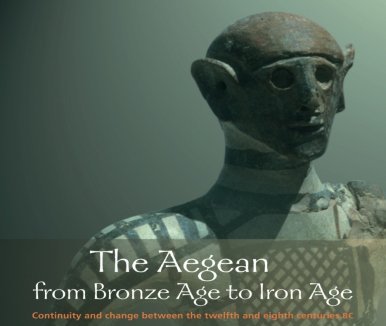 |
Wednesday, September 16, 2020, at 8 PM EST via Zoom
So You Survived the Mycenaean Collapse – Now What?
Evolving Ways of Life and Death in the Post-palatial Aegean
Sarah Murray, University of Toronto
One of the great mysteries of prehistory concerns the circumstances surrounding the famous collapse of complex states in the Eastern Mediterranean at the end of the Late Bronze Age. In this lecture, the question of what caused the collapse is set aside and instead considers what life was like for those who survived to dwell in its aftermath. As catastrophic as were the disruptions that swept the region around 1200 B.C.E., it is clear that life did go on in their wake.
|
This lecture focuses on developments in the archaeological record of Greece, where the twelfth and eleventh centuries are known as the Post-palatial period. The presentation reviews a range of material evidence, from settlement patterns to mortuary behavior, and reconstructs some of the realities, strategies, and coping mechanisms that characterized life for the survivors of collapse in this dramatic, tumultuous period of the Mediterranean past.
Sarah Murray is Assistant Professor in the Department of Classics, University of Toronto and Co-Director, Bays of East Attica Regional Survey
|
|
|
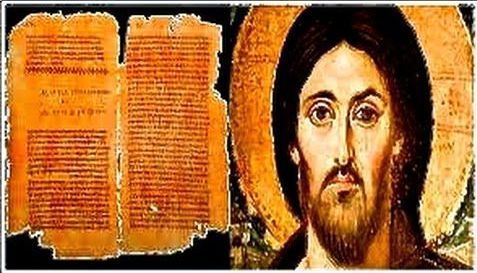 |
Wednesday, October 7, 2020, at 7:30 PM EST via Zoom
"Lost Gospels" and Other Christian Apocrypha: New Discoveries and New Perspectives
Tony Burke, York University
It is a common misconception (encouraged by intentional sensationalism) that apocryphal Christian texts—such as the Gospel of Thomas or the Acts of Peter—were “lost” before their rediscovery by scholars, sometimes revealed in dramatic announcements and high profile publications.
|
In truth, most apocryphal texts enjoyed a friendly co-existence with canonical Scripture throughout Christian history, and their “discovery” often amounts to nothing more than their transition from manuscript to print. Some texts have indeed been lost to history, and others recovered in fragmentary form thanks to archaeological excavations and happenstance discoveries, but likely their loss is due more to accidents of history than efforts at ecclesiastical censorship.
This presentation will introduce viewers to the broad range of apocryphal texts now known to scholars and illustrate the ways these texts have been used over time in Christian liturgy, literature, art, drama, and music. Far from “lost,” apocryphal texts have been and continue to be vital components of Christian culture.
Tony Burke is a Professor in the Department of the Humanities at York University in Toronto
|
|
|
 |
Sunday, October 25, 2020, at 7:30 PM EST via Zoom
Destination: Holy Of Holies
An Archaeological Walk Through The Jerusalem Temple
Joan Branham
Co-Hosted by B'nai Israel Congregation & Haberman Institute for Jewish Studies
Co-Sponsored by Temple Rodef Shalom
|
|
King Herod designed and built the Jerusalem Temple in the late first century B.C.E. Herod wanted a grander complex than the one hastily constructed after the return from the Babylonian exile. His temple lasted less than a century, as it was destroyed by the Romans in 70 CE. In its time, it was, and continues to be, a powerful symbol of sacred space; it continues to influence Judaism and Christianity to this day. It has been emulated, co-opted, exploited, and reinterpreted by religious traditions, from early churches and synagogues to Orlando's evangelical theme park with its mock Temple recreation.
This illustrated talk will serve as a guide through the Jerusalem Temple by following in the footsteps of the High Priest and worshippers (including Jesus) and navigating the barriers of sanctity and systems of blood, purity, sacrifice, and gender.
Joan Branham is Professor of Art History and Associate Dean, School of Arts and Sciences at Providence College. She is also Chair of the W.F. Albright Institute for Archaeological Research.
|
|
|
|
|
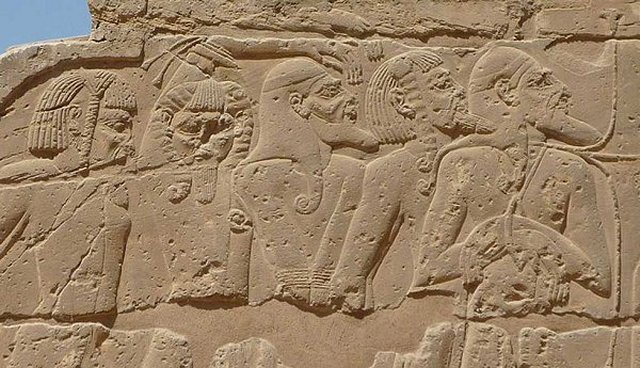
|
Wednesday, November 18, 2020 at 8 pm via Zoom
Sea Peoples in the Promised Land
Robert Stieglitz
Recent archaeological evidence unearthed in Israel and on Cyprus has shed new light on the Philistines, a leading tribe in the confederation the Egyptians termed ‘Peoples of the Sea’. These Sea Peoples settled along the coasts of Canaan at the very end of the Bronze Age (circa 1200 B.C.E.).
|
Their material culture reveals that these newcomers to the Promised Land, together with allies such as the Sikala, brought from their Aegeo-Anatolian homeland a sophisticated heritage including ashlar architecture and innovations in naval technology.
Some Sea People were literate, using a syllabic script called Cypro-Minoan. Biblical narratives and Egyptian records both portray the Sea Peoples as highly organized warriors. The Philistines gave their name to their new homeland as Philistia (Pelešet/Plšt/Pilišti) whence the Greek transliteration as Palaistin gave us the term Palestine.
Robert Stieglitz, Professor Emeritus at Rutgers University
|
|
|
|
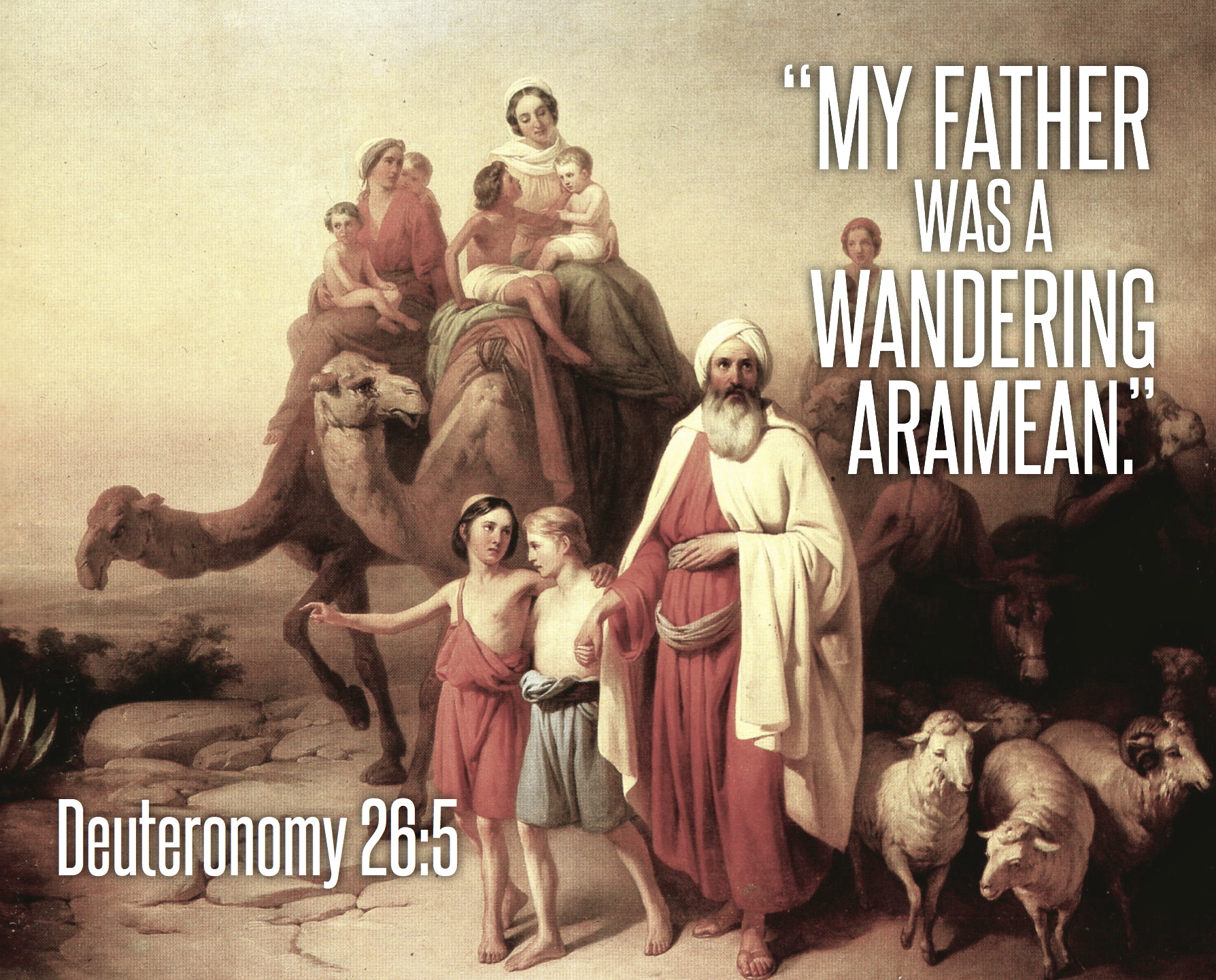
|
Wednesday, December 2, 2020 at 8 PM EST via Zoom
The Wandering Arameans in Egypt: New Light on the Samarian and Judean Diaspora
Tawny Holm, Penn State University
The Hebrew Bible views Egypt as the location of both slavery and refuge. The “wandering Aramean” ancestor mentioned in Deuteronomy 26:5 was a slave in Egypt, whereas the prophet Jeremiah and others went there after the fall of Samaria/Israel and Judah. This presentation offers a look at the evidence for diaspora life in Egypt found in Papyrus Amherst 63, a long and difficult text written in Aramaic but using the Demotic Egyptian script.
|
The many compositions in the papyrus reflect the religious traditions and collective cultural memory of a group of Aramaic speakers in Egypt, including Samarians and Judeans. It contains hymns that praise Yaho/Yahweh over other deities, and even an idealized description of their arrival in a new land: “I come from Judah; my brother has been brought from Samaria; and now, a man is bringing up my sister from Jerusalem.”
Tawny Holm is Associate Professor at Penn State University in the Dept. of Classics and Ancient Mediterranean Studies & Jewish Studies Program
|
|
|
|

|
Wednesday, December 23, 2020 at 8 pm EST via Zoom
Writing on the Wall: Graffiti and the Forgotten Jews of Antiquity
Karen Stern
Co-Sponsored by the Pozez JCC of Northern Virginia
Just like their neighbors throughout the eastern and southern Mediterranean, Mesopotamia, Arabia, and Egypt, ancient Jews scribbled and drew graffiti everyplace — in and around markets, hippodromes, theaters, pagan temples, open cliffs, sanctuaries, and even inside burial caves and synagogues. This presentation reveals what these markings tell us about the men and women who made them: people whose lives, beliefs, and behaviors eluded commemoration in grand literary and architectural works.
|
Making compelling analogies with modern graffiti practices, this presentation will demonstrate the overlooked connections between Jews and their neighbors, showing how popular Jewish practices of prayer, mortuary commemoration, commerce, and civic engagement regularly crossed ethnic and religious boundaries.
Illustrated throughout with examples of ancient graffiti, this lecture provides a tantalizingly intimate glimpse into the cultural worlds of forgotten populations living at the crossroads of Judaism, Christianity, paganism, and earliest Islam.
Karen Stern, Professor in the History Department at Brooklyn College
|
|
|
|
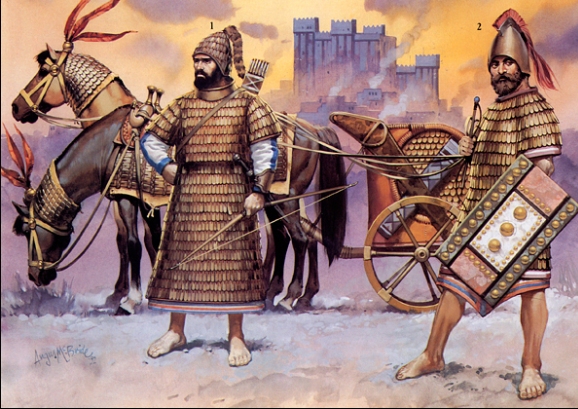
|
Wednesday, January 6, 2021, at 8 PM EST via Zoom
Egyptian Rule and Canaanite Resistance as Seen from Jaffa
Aaron Burke, UCLA
Co-Sponsored by the Washington, DC Chapter of ARCE (American Research Center in Egypt)
Excavations of the Egyptian New Kingdom fortress in Jaffa, on the southern side of Tel Aviv, were undertaken from 1956 to 2014. As the only Egyptian fortress that has been excavated in Canaan, its archaeological record, particularly the evidence from several dramatic destructions, provides a unique perspective on Egyptian rule and local resistance to it from ca. 1460 to 1125 B.C.E.
|
The archaeological evidence, taken together with textual sources, yields a picture of Canaanite resistance to the Egyptian military presence in Jaffa that originated in centers located throughout the coastal plain and persisted for several centuries until the Egyptians withdrew their garrisons. This presentation is drawn from excavations directed by the speaker and undertaken by the Jaffa Cultural Heritage Project between 2011 and 2014.
Aaron Burke is Professor of Near Eastern Archaeology, the Levant and Ancient Israel at UCLA
|
|
|
 |
Wednesday, January 27, 2021, at 8 PM EST via Zoom
Archaeology in Israel: Where the Past Meets the Present
Eric Meyers and Carol Meyers
Archaeology is commonly understood as the study of past human life undertaken by analyzing material remains. What is not usually recognized is that the archaeological quest for the past is inevitably shaped by the excavators’ present environment. Moreover, archaeology can serve a variety of purposes, in addition to the recovery of ancient cultures.
|
|
This presentation will analyze findings at several ancient key sites in Israel to illustrate the intersection between the discoveries there and the pressures of the modern world. Highlighted excavation sites include Masada, Hazor, Beth Alpha (on the northern slopes of the Gilboa mountains near Beit She'an), Jerusalem, and Sepphoris (located in the Galilee). The excavation of these well-known sites - all national parks in Israel - exemplify the ways excavators respond to contemporary issues and problems.
Eric Meyers is Professor Emeritus in Judaic Studies at Duke University
Carol Meyers is Professor Emerita of Religious Studies at Duke University
|
|
|
|
|

|
Wednesday, February 10, 2021, at 8 PM EST via Zoom
The Desert Fortresses of Ptolemaic Egypt
Jennifer Gates-Foster
Co-Sponsored by the DC Chapter of ARCE (American Research Center in Egypt)
Recent archaeological work in Egypt’s Eastern Desert has revealed a network of fortresses and way stations constructed in the mid-third century B.C.E. by the pharaohs of Ptolemaic Egypt. These military installations were constructed to supply and protect caravans transporting battle elephants from the coast of the Red Sea to the Nile Valley, as well as to provide support to mining expeditions dispatched to this mineral-rich region.
|
The remains of these remote outposts demonstrate a significant investment by the Egyptian monarchs and a remarkable period of intensive occupation that lasted some seventy years, ending in the early second century B.C.E. in the years after the Great Revolt in Upper Egypt in 206 B.C.E.
The occupants of these desert forts—a community that included members of the Ptolemaic army, civilians, and even members of the royal household—left behind a remarkable material and textual record that gives us detailed new information about their daily life, food preferences, and religious practices as well as their contact with nomadic peoples of the region.
Jennifer Gates-Foster - Associate Professor of Classical Archaeology at the University of North Carolina at Chapel Hill
|
|
|
 |
Wednesday, February 24, 2021, at 8 PM EST via Zoom
The Fugitive Hero Stories the Bible and the Ancient Near East
Edward Greenstein
Were there precursors in the ancient world to the biographical stories of Joseph, Jacob, Moses and David as related in the Hebrew Bible?
|
Indeed, the early story of the people of Israel reflects a narrative pattern evident in many other ancient societies such as the Egyptian story of Sinuhe, the north Syrian “autobiography” of Idrimi King of Alalakh, the so-called Apology of Hattushili III of the Hittite Empire, the royal narrative of Esarhaddon of Assyria, and the narrative of Nabonidus King of Babylonia.
These foundational stories all tell of a person who is compelled to flee their native land. Desiring to return from exile, the person practices divination or receives a message from God that they can return home with divine support. En route, the protagonist fights off attacks and finally attains power or prestige at home. What else these tales have in common is that they all conclude with a cultic ritual or, more often, with the renewal or invention of a cult.
Edward Greenstein is a Professor of Bible at Bar-Ilan University
|
|
|
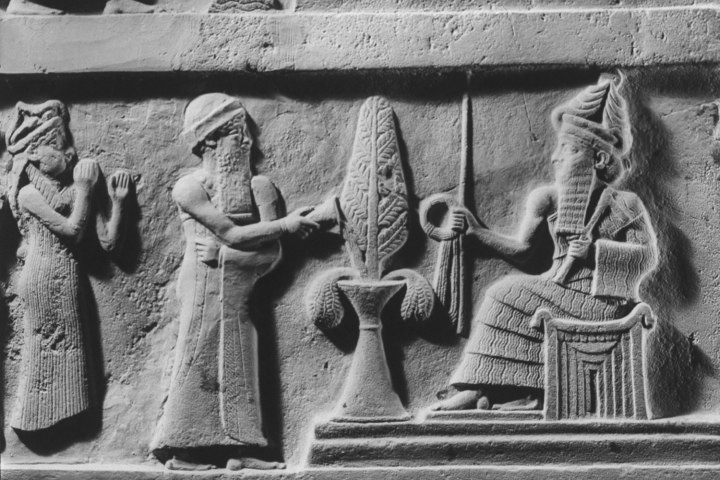 |
Wednesday, March 10, 2021, at 8 PM EST via Zoom
Inventing the Sumerians: Language, Literature & Politics in Early Mesopotamia
Gonzalo Rubio, Pennsylvania State University
Scholars and the public alike often use the label “Sumerians” when they refer to those responsible for the development of the earliest city-states in southern Mesopotamia. There was, however, no such thing as a Sumerian ethnic identity in the third millennium B.C.E.
|
The Sumerian language was spoken in the southernmost region of Mesopotamia (Sumer). Nevertheless, it was only after this language ceased to be anyone’s mother tongue, by the end of the third millennium, that the concerted process of the cultural production of Sumerian literature began. This articulation of a cultural tradition in Sumerian, from legendary kings to mythology, coincides with the displacement of the centers of power towards the north, outside Sumer, especially during the Babylonian dynasty of Hammurabi.
This illustrated lecture will explore the political and theological mechanisms that lay and somehow still lie behind the invention of a Sumerian identity.
Gonzalo Rubio is Associate Professor of Classics & Ancient Mediterranean Studies at Penn State University
|
|
|
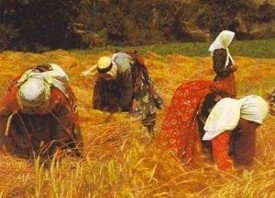 |
Wednesday, April 14, 2021, at 8 pm EST via Zoom
The Real Lives of Women in Biblical Times
Beth Alpert Nakhai, University of Arizona
The Hebrew Bible (Tanakh/Old Testament) is filled with stories about women, but no single story provides a complete picture of women’s lives – nor is any biblical woman meant to be typical of all Israelite women. So, how can we more fully understand the lives of Israelite women – and in that way, develop a fuller understanding of the lives of all ancient Israelites, those mentioned in the Bible and those the Bible never discussed?
|
Archaeology offers an alternate resource, one that allows us to go beyond the Bible in order to examine everyday life in Iron Age Israel. It brings us into villages and homes and shows us dishes and tools, shrines and figurines, workplaces, and tombs. This illustrated presentation uses archaeological resources to explore the lives of Israelite women, helping us place the biblical narratives into their ancient real-life setting.
Beth Alpert Nakhai is an Associate Professor at the Arizona Center for Judaic Studies at the University of Arizona.
|
|
|
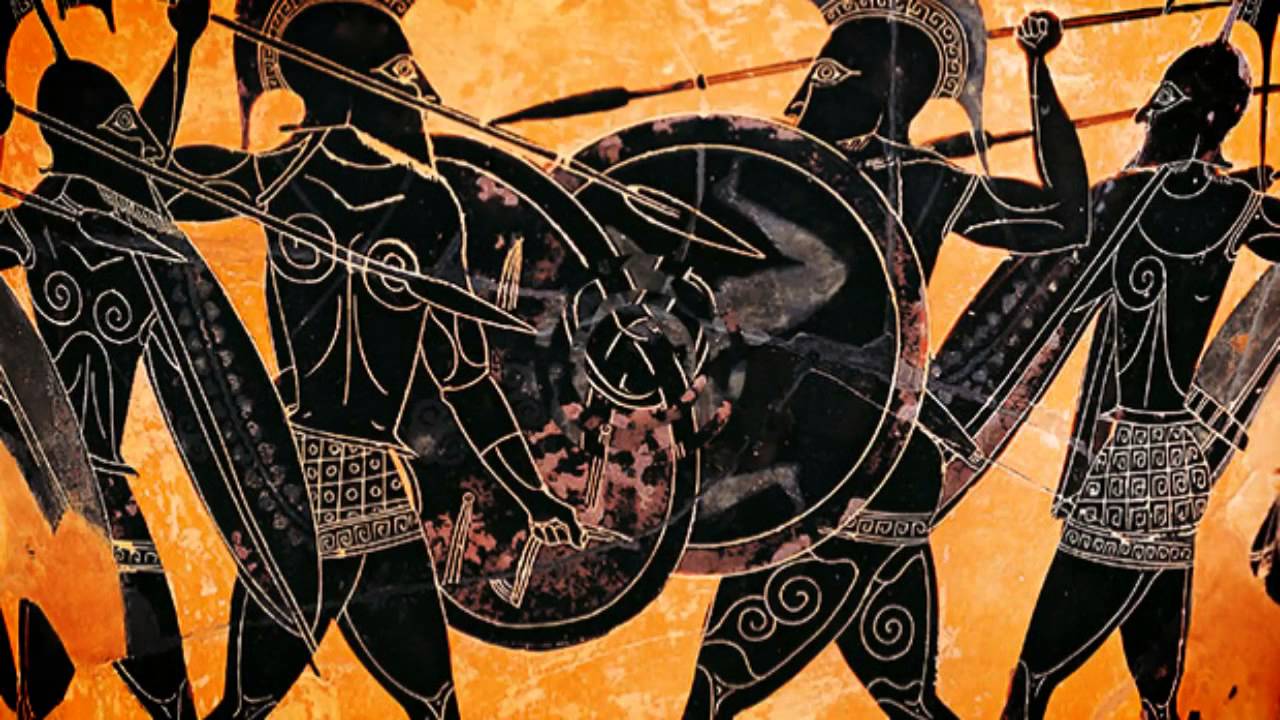 |
Wednesday, April 28, 2021, at 8 pm EST via Zoom
History of Sparta & How It Triumphed Over Athens
Alfred S. Bradford, University of Oklahoma
The Spartans were once the supreme infantry power in the Greek world. Their enemies usually did not dare to face them in the field and pretty much came into battle expecting to lose. The Athenians were the supreme naval power, so far superior that after the first few engagements of the Peloponnesian War, their enemies fled if they saw them on the seas.
|
These two powers fought each other and for years tried to figure out how best to deploy their military strengths and defend their weaknesses. This talk, after a brief introduction to Spartan society and history, analyzes how the Spartans found a winning strategy and were able to defeat the Athenians. Perhaps, more than any other factor, the key to victory was the ability of the Spartans to produce leaders who could find the weak spots in the Athenian system.
Alfred S. Bradford holds the John Saxon Chair in Ancient History at the University of Oklahoma
|
|
|
 |
Wednesday, May 12, 2021, at 8 pm EST via Zoom
The Destruction of Sacred Texts in Biblical Antiquity
Nathaniel Levtow, University of Montana
The intentional destruction of texts dates back to the beginnings of writing in Mesopotamia and has for millennia been associated with violence against human beings. From the burning of the Talmud in Medieval Europe to the burning of the Qur’an in contemporary America, the public violation of sacred texts has remained a powerful expression of symbolic violence and cross-cultural conflict.
|
In the ancient world, however, writing was a ritual activity that could physically embody divine will and human relationships through words inscribed upon stones, tablets, and scrolls. This was especially true in the ancient Near East, where the destruction of texts was explicitly linked to the destruction of cities, gods, people, and the world itself..
This illustrated presentation will explore the variety of ways in which law codes, written spells and oracles, royal monuments, inscribed statues, and treaty tablets were burned, smashed, cut, buried, submerged, eaten, hidden, abducted, erased, and rewritten.
Nathaniel Levtow is an Associate Professor of History at the University of
|
|
|
 |
Wednesday, May 26, 2021, at 8 pm EST via Zoom
The Hebrew Bible and Myth
Peter Machinist
There is a widespread suspicion about the word "myth": that it is a word that describes something or a facet of someone that is untrue. In part because of this suspicion, "myth" has often been kept away from any discussion of the Bible. The two words, “Myth” and “Bible”, say those who share this view, are opposed at all levels. To associate them, they say, is not only wrong but dangerous because it would distort and debase what the Bible is and what it seeks to teach.
|
This presentation will demonstrate the counterargument, namely, that "myth" can be associated with the Bible; that, indeed, it is a helpful term and concept in understanding the Bible; and that in doing so, "myth" turns out not always to be something that is untrue.
Peter Machinist is Professor Emeritus at Harvard University and Harvard Divinity School
|
|
|
 |
Wednesday, June 9, 2021, at 8 pm EST via Zoom
Warfare and Mercenary Forces in the Age of Amorites
Aaron Burke, University of California, Los Angeles
Warfare on a vast scale across much of the ancient Near East throughout the Middle Bronze Age (2000–1550 B.C.E.) was a major element of the so-called Age of Amorites. Military engagements usually took the form of siege warfare. This battlefield tactic evolved into a highly formalized and very consistent style, propelled by the intense competition and emulation that undergirded interstate relations during this period.
|
New inventions such as the composite bow, chariot, and siege equipment became common, and as a result, were even adopted in Egypt by the end of the period. In addition, the Middle Bronze Age saw increasing employment of mercenary units whose emergence during the late third millennium can be directly tied to the relative insecurity that pervaded the ancient Near East in the wake of the collapse of the Old Kingdom in Egypt and the fall of Akkad in Mesopotamia.
By the start of the Middle Bronze Age, military positions such as the “chief of the Amorites” and “scribe of the Amorites” suggest an increasingly formal dependence on organized mercenary units embedded within the militaries of states from Mesopotamia to Egypt. Indeed, reliance on such units has even been recently suggested as the reason behind the actual decline of Babylonian power, rather than a Hittite invasion of southern Mesopotamia.
|
|
|
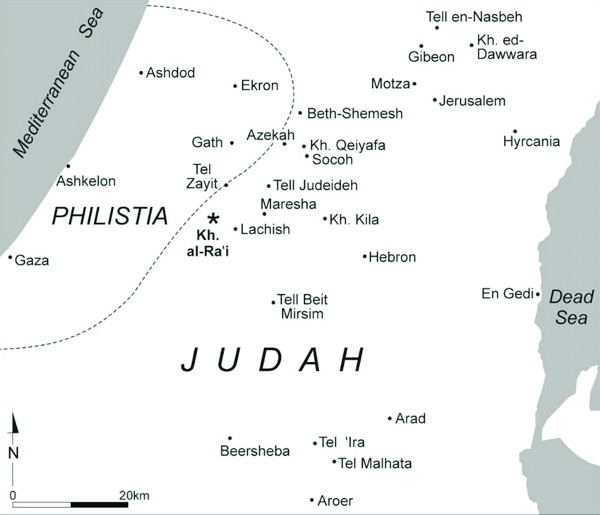 |
Wednesday, June 23, 2021 at 8 pm EST via Zoom
What Recent Excavations Reveal About the Formation of Ancient Israel
James W. Hardin
Recent archaeological finds attending the formation of ancient Israel and Judah, especially during the putative times of David and Solomon, has ignited a debate about the history of the ancient Near East.
New excavations along the Philistine and Judahite frontier such as Khirbet Summeily, and a better understanding of old ones such as Tel el-Hesi, are providing a better understanding of the formative stages of ancient Israel during the Iron Age I/Iron Age II transition (the proposed time of David and Solomon).
|
When this information is combined with that from other sites in the larger region, it seems that a process had begun of integrating settlements into larger socio-political and economic networks. Some possible explanations as to the complex settlement processes and causes in the southern Levant are suggested in the presentation, with a particular focus on trade.
James W. Hardin is Associate Professor in the Department of Anthropology and Middle Eastern Cultures at Mississippi State University
|
|
|
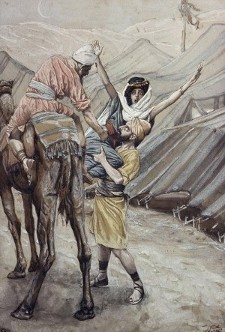 |
Wednesday, July 14, 2021 at 8 pm Eastern via Zoom
Unholy Texts: Biblical Rape Narratives
Carl Ehrlich, York University
The topic of rape appears a number of times in the Hebrew Bible. It is broached both explicitly and implicitly, reflected in a number of literary genres, including legal, narrative, poetic, and prophetic texts.
The violent act of rape is nowhere condoned, and was a tragic fact of life in the biblical world (as it is in ours), yet it still found a place in our sacred texts. Why was this? What was the context? This lecture surveys biblical texts relating to rape in a number of these literary genres and attempts to classify the allusions to rape according to various literary, social, theological, and legal criteria.
Carl Ehrlich is Professor of Hebrew Bible at York University (Toronto)
|
|
|
|
 |
Wednesday, July 28, 2021, at 8 pm EST via Zoom
The House of the Sun-Disc
Susan Redford, Penn State University
Co-sponsored by the DC Chapter of ARCE
For reasons only dimly perceived, the Pharaoh Akhenaten of Egypt in the 14th century B.C. carried Egypt unexpectedly into a stage of religious thought we can only call “monotheism”.
The lecture will present some of the most important evidence (hitherto only partly accessible) related to the Amarna revolution in Ancient Egypt. This involves new discoveries from Theban Tomb188, the only tomb in the Theban necropolis dated wholly and securely to the reign of the heretic pharaoh Akhenaten. The tomb belonged to Parennefer, the tutor and erstwhile butler of the king.
|
|
The rapid evolution in the realms of ideology, iconography and permissible artistic themes and motifs is well represented in Parennefer’s tomb, whose decoration kept pace with the momentous changes in the king’s thinking. When dovetailed with the pictorial evidence gleaned from the excavations of the great Gem-pa-aten temple at Karnak, it becomes possible to chronicle these rapid changes.
Susan Redford is Assistant Teaching Professor of Classics and Ancient Mediterranean Studies at Penn State University
|
|
|
|
 |
Wednesday, August 11, 2021 at 8 pm via Zoom
From Sanctuary to Synagogue
Robert Stieglitz, Professor Emeritus at Rutgers University
This illustrated lecture details the origins of the synagogue and its decorative arts. This religious institution and its practice has roots that can be traced back to the Biblical traditions of the "sanctuary"(miškan), also known as the Tabernacle, and the subsequent permanent "house" (bayit), or temple (miqdaš) built for the God of Israel.
Special attention will be given to the artistic motifs unearthed in the ancient synagogues in Israel, structures primarily dateable to the Byzantine period (4th - 7th centuries C.E.). The synagogues and their art can be seen as the culmination of a long process of development, whose roots are traceable to Hellenistic era (3rd - 1st centuries B.C.E.).
Robert Stieglitz is Professor Emertius at Rutgers University.
|
|
|
|
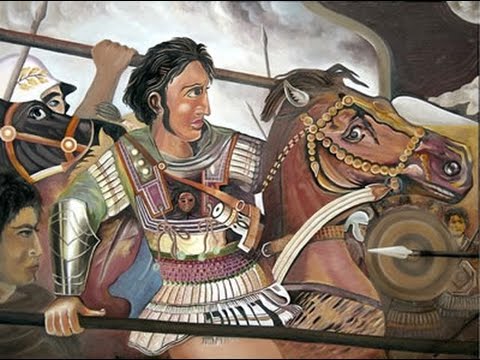 |
Wednesday, October 6, 2021 at 8 pm Eastern via Zoom
Alexander the Great: His Career, Character, and What Made Him “Great”
Jennifer Tobin
Co-sponsored by the Hellenic Society Prometheas
The meteoric career of Alexander the Great is the stuff of legends. As a precocious child he tamed the mighty horse Bucephalus, in his teens he led the Macedonian cavalry and before the age of 20 he was proclaimed King of Greece. Through ingenious military tactics and crafty diplomacy, he forged the largest empire the ancient world had ever known, but by the age of 32 he lay dead in Babylon.
|
|
While the outlines of his life are well known, the motivations that drove Alexander’s extraordinary trajectory are less clear. This presentation explores the forces that propelled Alexander to greatness as well as the demons that drove him to his early death.
Jennifer Tobin, Associate Professor Emerita, Department of Classics and Mediterranean Studies at the University of Illinois at Chicago
|
|
|
|
 |
Wednesday, October 20, 2021, at 8 pm Eastern via Zoom
Just What Was Destroyed at the End of the Late Bronze Age?
Jesse Millek
Throughout the Ancient Near East / Eastern Mediterranean, the end of the Late Bronze Age (ca. 1200 BC) is often defined in the literature as a time of violence and upheavals. Great destruction events ravaged this area, including the destruction of the palaces in Greece, the burning of Ras Shamra in Syria, the sacking of Hattusa in Anatolia, and the destruction of many great Canaanite cities.
|
|
How much of this supposed destruction holds true under the scrutiny of archaeological evidence? For those sites with evident obliteration, what might have been the cause of the destruction based on the physical archaeological evidence?
The goal of this talk is to demonstrate just how much was destroyed (and where) at the end of the Late Bronze Age in the Ancient Near East / Eastern Mediterranean and what this indicates for the multiple theories that utilize destruction as a prime mover in the collapse of Bronze Age civilizations.
Jesse Millek is a research fellow in the Department of Middle East Studies at the University of Michigan
|
|
|
|
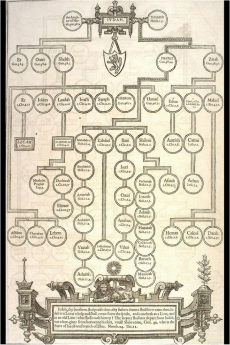 |
Wednesday, November 3, 2021 at 8 pm Eastern via Zoom
The Politics of Genealogies in Second Temple Times
Deirdre N. Fulton, Baylor University
Genealogies are a prominent feature in biblical literature, particularly in the Torah as well as sacred literature from the postexilic period, namely the books of Chronicles, Ezra, and Nehemiah. This interest in including genealogies within the biblical texts serves many different purposes, including creating identity, making explicit family connections, enhancing one’s own pedigree, and asserting specific claims to a territory, position or a group of people.
This lecture surveys biblical genealogies, specifically royal and non-royal genealogies in Chronicles, Ezra, and Nehemiah. The presenter will discuss the setting and structure of specific genealogies and place them within the broader Ancient Near Eastern cultural framework.
Deirdre Fulton is Associate Professor of Hebrew Bible/Old Testament at Baylor University
|
|
|
|
 |
Wednesday, November 17, 2021 at 8 pm EST via Zoom
Mendes, City of the Ram-Man
Donald Redford
Co-sponsored by the DC Chapter of ARCE
Approximately 50 km. due east of the center line of the Egyptian Nile Delta, the rich arable land turns into a wilderness of rock and gigantic sand dunes. Proceeding towards the sunrise, the traveler has begun to cross the only land bridge linking the two largest continents on earth, Africa and Asia, viz. the Sinai Peninsula.
|
|
Two thresholds, Israel on the Asian side, and Lower Egypt on the African, constrain his route and throw the traveler together with other caravans, settlers, traders and armies carrying goods, slaves, even ideas!
Mendes, a large city occupied from remote pre-historic times to the Middle Ages, stands on this African threshold. We have subjected the site to excavation (now interrupted because of the pandemic) from 1990, and it has yielded a wealth of information, some of it turning our conventional wisdom on its head. Welcome to the “City-of-the-Ram-man!”
Donald Redford, Professor of Classics and Ancient Mediterranean Studies and History at Pennsylvania State University and Director of the Mendes Excavations.
|
|
|
|
 |
Wednesday, December 15, 2021 at 8 pm Eastern via Zoom
The Political Expansion of the United Monarchy
Steven Ortiz
The rather recent discovery of a fortress at Khirbet Qeiyafa and the possibility that it was built by King David has reignited the debate on the United Monarchy and state development in Judah
|
|
This presentation will coalesce recent archaeological research in the south of ancient Israel, with emphasis placed on the results of recent excavations at Tel Gezer. Archaeological findings and a re-reading of the biblical text demonstrate that the northern Shephelah was a key region in the expansion of Judah toward the coastal plain during the Iron Age IIA (circa 1000-800 BCE).
In addition, archaeological research in the Shephelah is now expanding our knowledge of the contested border between Philistia and Judah and the various boundary shifts throughout the Iron Age. The emerging archaeological record, along with several biblical accounts such as David and Goliath, King David’s defeat of the Philistines at the Battle at Baal-Perazim, and Solomon’s many border fortifications, show evidence of a planned westward expansion
Steven Ortiz, Director of the Lanier Center for Archaeology at Lipscomb University and Co-Director of the Tel Gezer Excavation Project
|
|
|
|
 |
Wednesday, January 12, 2022 at 8 pm Eastern via Zoom
The Seven Wonders of the Ancient World: Monumental Power, Politics, and Pride
Jennifer Tobin
Although most people today are aware of the Seven Wonders of the Ancient World, few can name all seven. Perhaps fewer still realize that throughout much of its history, the list was never static. From the time of its creation in the 3rd century BCE until the Renaissance, when the list finally became canonized, “wonders” were added and removed from the list according to such factors as political expediency, religious affiliation, and personal taste.
This lecture will examine the various monuments that earned “wonder” status, exploring the reasons for each one’s construction and why each was deemed marvelous. In the process, we will note how each of these monuments served to enhance the status of the person or community that created it.
In a similar way, by reviewing the cultural climate in which the list was initially created together with the historical circumstances that motivated changes to the list, this lecture will investigate how the list of the Seven Wonders has promoted notions of cultural, political, and religious supremacy from antiquity to the present.
Jennifer Tobin, Associate Professor Emerita, Department of Classics and Mediterranean Studies at the University of Illinois at Chicago
|
|
|
|
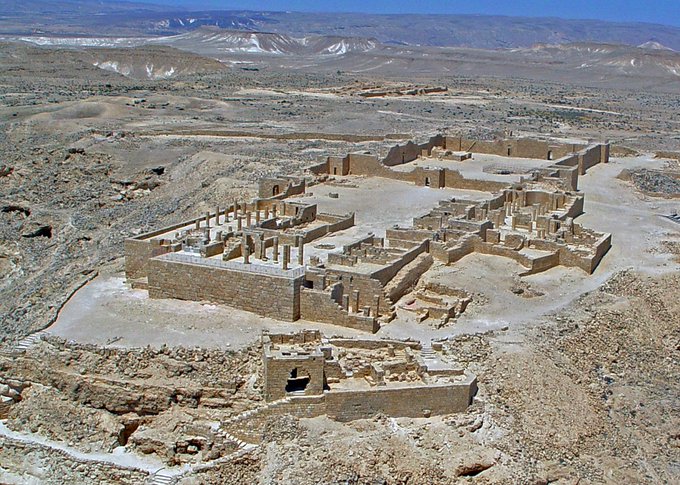 |
Wednesday, January 26, 2022 at 8 pm Eastern via Zoom
The Roman Army in the Negev
Alexandra Ratzlaff
The landscape of the Roman Eastern Empire included extreme conditions in barren, marginal zones such as the region of the Negev located in modern-day southern Israel. One of the strengths of the Roman mechanisms of imperialism was the extent to which the Roman army, while in many ways considered a very standardized and homogenous institution, excelled at optimizing indigenous strategies of occupation in such trying regions and making them their own.
|
|
Roman internal security in the Negev developed out of modification of the established Nabataean system of trade routes. Roman army units monitored road systems, secured supply lines, and performed local policing duties. Here the Roman army functioned as agents of imperial administration in a region without large urban centers or embedded officials.
This presentation will explore how the Roman army facilitated imperial interests throughout the Negev from the 1st century BCE – 6th century CE for economic reasons, rather than for military or security concerns.
Alexandra Ratzlaff, Assistant Professor of Classical Studies at Brandeis University
|
|
|
|
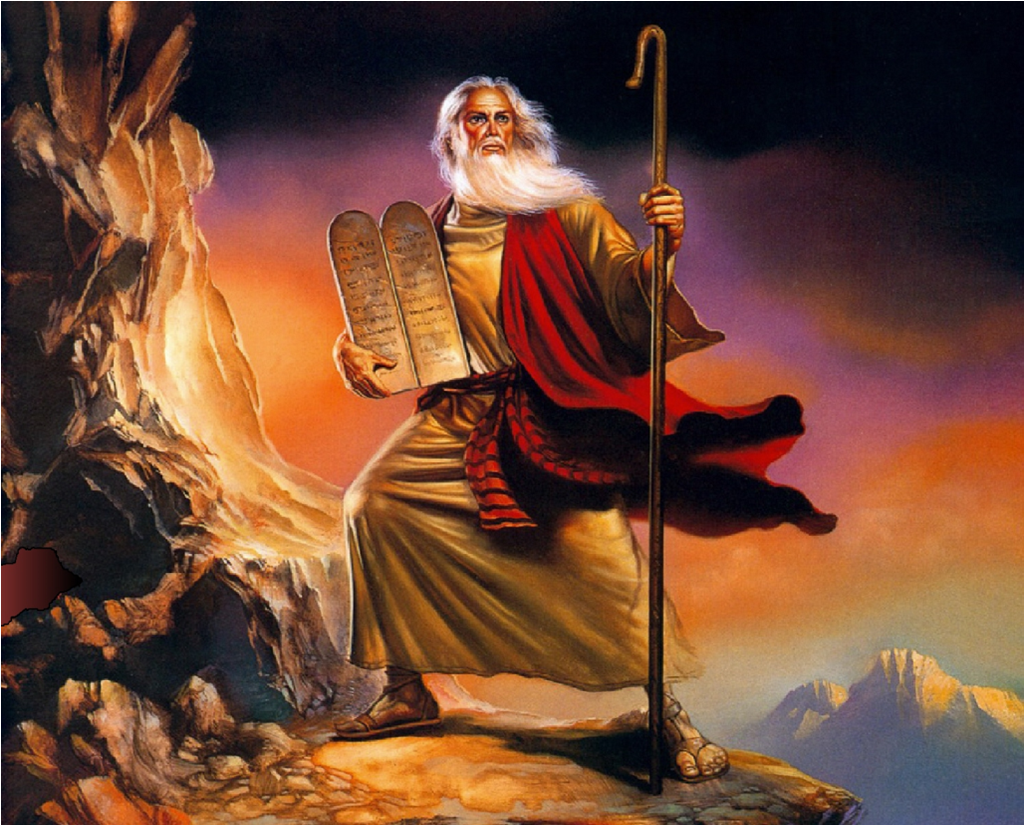 |
Sunday, February 6, 2022, at 7:30 pm Eastern - via Zoom
What Were the Words of God?
Donald Kane
Co-sponsored by B'nai Israel Congregation and the Haberman Institute for Jewish Studies
Moses wrote down everything the Lord had said (Exodus 24:4)
Then the Lord reached out his hand and touched my mouth and said to me, “I have put my words in your mouth” (Jeremiah 1:9)
|
|
Does the Hebrew Bible contain the immutable words of God? Did the prophets speak the words of God? Might there be older versions of our sacred writings that we can point to that add or subtract from the text or, in some cases, demonstrate different theological meanings?
This illustrated lecture will highlight differences between what is called the “Masoretic” Bible Jews use today, the Greek translation of the Hebrew Bible known as the Septuagint, sacred texts recovered from among the Dead Sea Scrolls, and the Pentateuch used by Israel’s Samaritans.
The presentation will also put into context how the ancestors of today’s Jews apprehended the sacred writings that were pluriform in their time, and; examine the role scribes played in reproducing, harmonizing, and changing these texts, and indeed, in preserving Revelation.
Donald Kane, President of BASONOVA and Chair of BAF
|
|
|
|
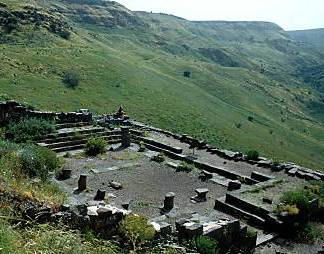 |
Wednesday, March 9, 2022, at 8 pm Eastern via Zoom
Architectural Development of Ancient Galilean Synagogues
Paul Flesher
Kathe Schwartzberg Memorial Lecture
In the first six centuries CE, Galilee was a vibrant center for the religious and demographic growth of Judaism. It thus provides a prime laboratory for studying the architectural development of the early synagogue, especially as it became Judaism’s primary religious structure after the Jerusalem Temple’s destruction in 70 CE.
Archaeological excavations have unearthed four different architectural styles of synagogues common during this time, from the early, open-center layout of Jesus’ time to the basilica styles widespread later in this period.
|
It turns out that as synagogue architecture developed away from the early, open-center plan, each new style enhanced the ability of the audience to hear the reading of Scripture—a primary ritual activity. This presentation will show how the synagogue increasingly became a building custom-designed for hearing the Scripture reading.
Paul Flesher, Professor of Religious Studies, University of Wyoming
|
|
|
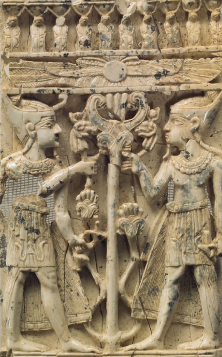 |
Wednesday, March 23, 2022, at 8 pm Via Zoom
Phoenician’s Cultural Influence in the Levant/Israel
Carolina Lopez-Ruiz
As the Levant recovered from the Late-Bronze-Age systems-collapse, the Phoenician population centers offered the fragmented Levantines an inspiring continuity with the lustrous urban world that had once been exemplified by the Canaanites at Ugarit. Tyre, the greatest city of Phoenicia, stood out as a beacon of exploration and innovation as it grew ever more prosperous through its commercial and colonial ventures in the western Mediterranean.
From architectural traditions to ancestral institutions, artistic models, including sphinxes and volute capitals, and alphabetic writing, the Phoenicians were active agents in fostering and setting standards for a uniquely Levantine culture. In turn, in the process of selective adaptation of this Phoenician culture, Israel emerges as an active participant in the Mediterranean-wide and regional networks, while forging a unique local identity.
|
Carolina Lopez-Ruiz, Professor in the Department of Classics -The Ohio State University
|
|
|
 |
Wednesday, April 13, 2022, at 8 pm Eastern via Zoom
Digging Homer: The Mycenaean Palace at Iklaina & Birth of Greek Epic Poetry
Michael Cosmopoulos
Sponsored by the Hellenic Society Prometheas
For thousands of years, Homer’s Iliad has remained the classic tale of love, honor, and war. Exciting archaeological discoveries in the past 150 years have unearthed the great palaces of the Homeric heroes and revived the fascinating society of the Mycenaeans. In antiquity itself, and in our memory of antiquity, the great palaces at Mycenae, Tiryns, Pylos, and Troy stand at the crossroads between myths and historical reality.
The world of the Mycenaeans still holds many surprises. Recent excavations at the site of Iklaina have brought to light one of the capitals of the Mycenaean state of Pylos. Massive Cyclopean structures, monumental buildings decorated with beautiful wall paintings, advanced urban infrastructure, and the earliest known records of state bureaucracy challenge current knowledge about the origins and operation of Mycenaean states.
|
These findings allow us a glimpse into previously unknown aspects of the Homeric epics. In this illustrated lecture, Professor Cosmopoulos will present the exciting archaeological discoveries at Iklaina and discuss their significance for the historical foundation of Homer’s epics.
Michael Cosmopoulos, Professor in Greek Studies at the University of Missouri-St. Louis.
|
|
|
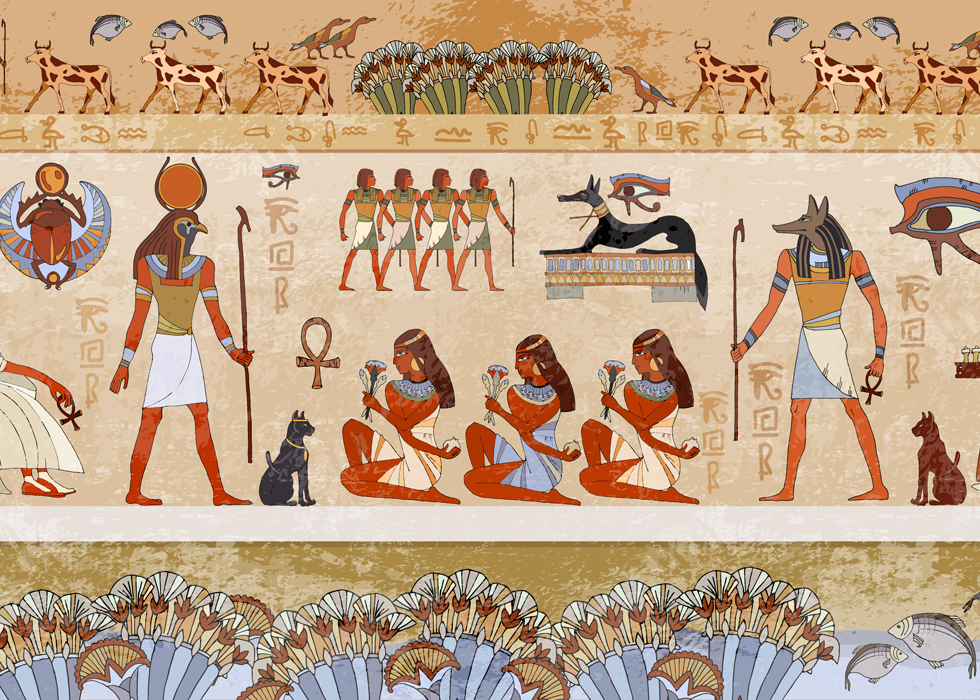 |
Wednesday, April 27, 2022, at 8 pm Eastern via Zoom
Famine and Festival in Ancient Egypt
Ellen Morris
Sponsored by the DC Chapter of ARCE
Two events in pharaonic and Greco-Roman Egypt radically transformed the status quo: revolution and mass mortality. When these two distinct events co-occurred, they often destabilized a rigid social hierarchy.
Such moments – at which underlings threatened to gain the upper hand or at least exhibited a marked reluctance to return to their former subservience – caused an immense degree of anxiety among Egypt’s elites. Extremely severe famines and the plagues that often engendered this destabilization occurred infrequently, but such were the upheavals and social transformations that happened in their wake that their memory had to be passed down through generations as a caution.
|
For people who knew only strong kings and times of plenty, it was necessary to “remember” hunger, suffering, and terror in order that they take warning signs seriously. Although written testimony and prophesy helped keep such memories alive, echoes of social upheavals that were invested into performance rites and animal fables recited during the New Year’s festival may have been among the most effective methods of transmitting intergenerational memories of collective trauma.
Ellen Morris, Associate Professor of Ancient Studies at Barnard College, Columbia University.
|
|
|
 |
Wednesday, May 11, 2022, at 8 pm Eastern via Zoom
Beer in the Ancient Near East: New Insights from Archaeology
Jennie Ebeling, University of Evansville
Beer, along with bread and other grain-based foods, was a dietary staple in the ancient Near East and Egypt. Safer to drink than water due to alcohol's ability to kill harmful bacteria, most ancient beer was made by women at home as an offshoot of household bread production. Although past researchers have focused more on wine than a beer due to wine's economic and ritual importance (and the modern western belief that drinking wine is more 'civilized' than drinking beer), recent studies have pushed back the date of the earliest beer production by thousands of years and revealed the widespread consumption of beer through the Bronze and Iron Ages.
|
This lecture presents an overview of the textual, artistic, and archaeological evidence for beer in ancient Near Eastern cultures and the recent research that is transforming our understanding of beer's importance in ancient Israel.
Jennie Ebeling is an Associate Professor of Archaeology at the University of Evansville and was the Co-Director of the Jezreel Expedition.
|
|
|
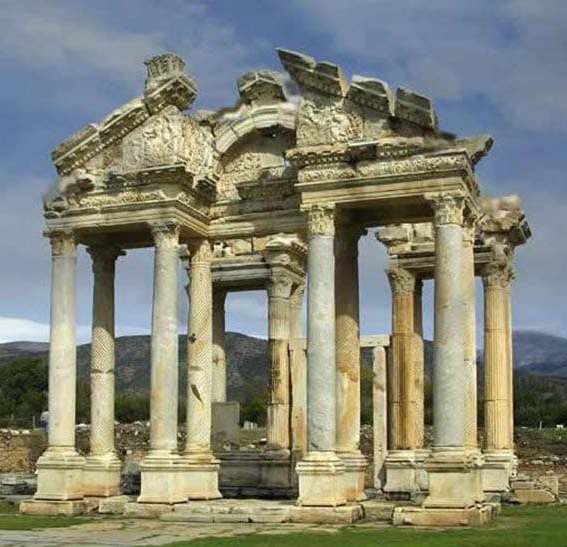 |
Wednesday, May 25, 2022, at 8 pm Eastern via Zoom
Sacred Prostitution and the Cult of Aphrodite/Venus in Roman Corinth
Barbette Spaeth
According to the first-century geographer Strabo, "The Sanctuary of Aphrodite at Corinth was so rich that it possessed more than a thousand sacred slaves, prostitutes, whom both men and women dedicated to the goddess."
Many have understood this passage to refer to "sacred prostitution," that is, the practice of payment for sexual acts conducted in a cultic context. The passage has thus been used to elucidate Paul's letter to the Corinthians (1 Cor. 6), where the apostle rails against the early Christians of the city for having congress with prostitutes.
What evidence do we have for a cult of Aphrodite, or Venus in Roman terms, in the city and its ties to sacred prostitution? This talk will examine the literary and archaeological evidence for the cult of this goddess in Roman Corinth and consider the premise that this ritual practice occurred in her sanctuaries.
|
Barbette Spaeth, Professor of Classical Studies, William & Mary
|
|
|
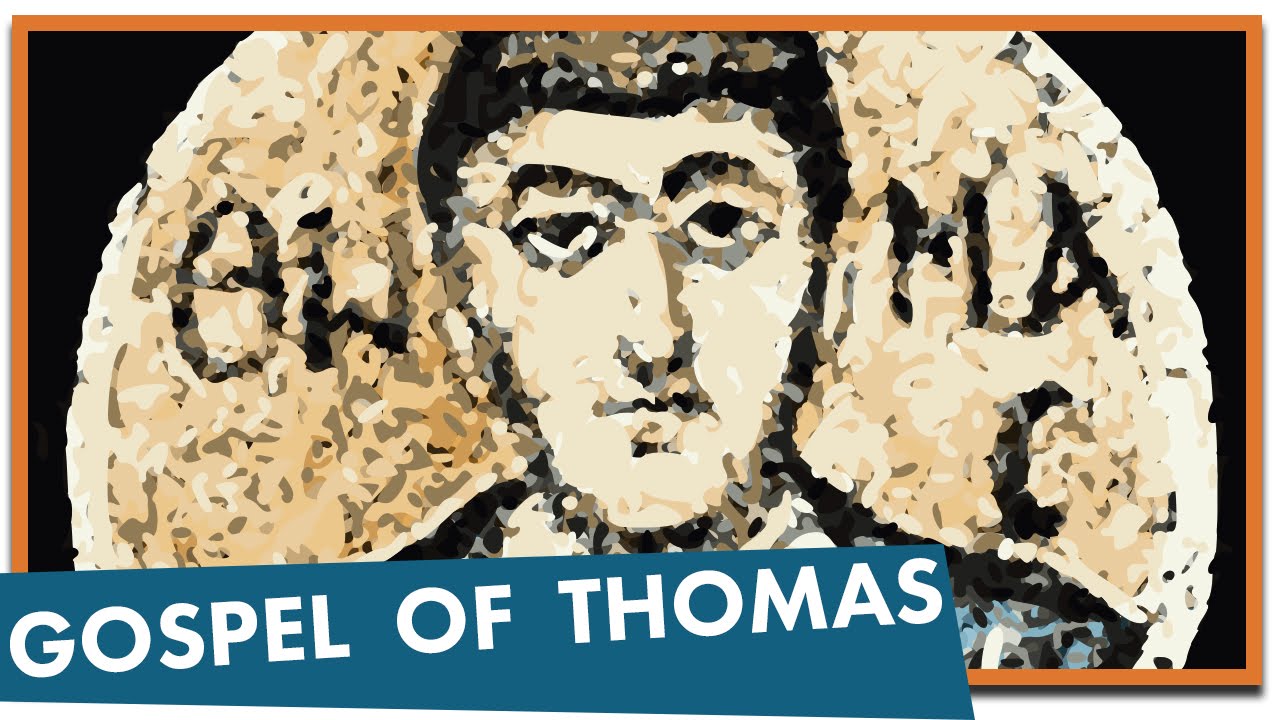 |
Wednesday, June 15, 2022 at 8 PM Eastern via Zoom
The Message of Gospel Of Thomas: Resonances with Jewish Tradition
Elaine Pagels
This talk engages the secret Gospel Of Thomas, discovered in 1945 in Upper Egypt, which consists of 114 sayings attributed to Jesus of Nazareth.
|
While most scholarly research has focused on half of these sayings long familiar from New Testament parallels, here we focus instead on the others - more than fifty "secret sayings" - all previously unknown, and the questions they are raising for scholarly discussion.
Did Jesus of Nazareth, like other first century rabbis, offer secret teaching? How do the "secret sayings" in Gospel Of Thomas, which offer exegetical interpretation of Genesis 1, resonate with esoteric Jewish traditions that may date back as early as the second century C.E., and also, perhaps with kabbalistic traditions articulated more than a millennium later?
Elaine Pagels is Professor of Religion at Princeton University
|
|
|
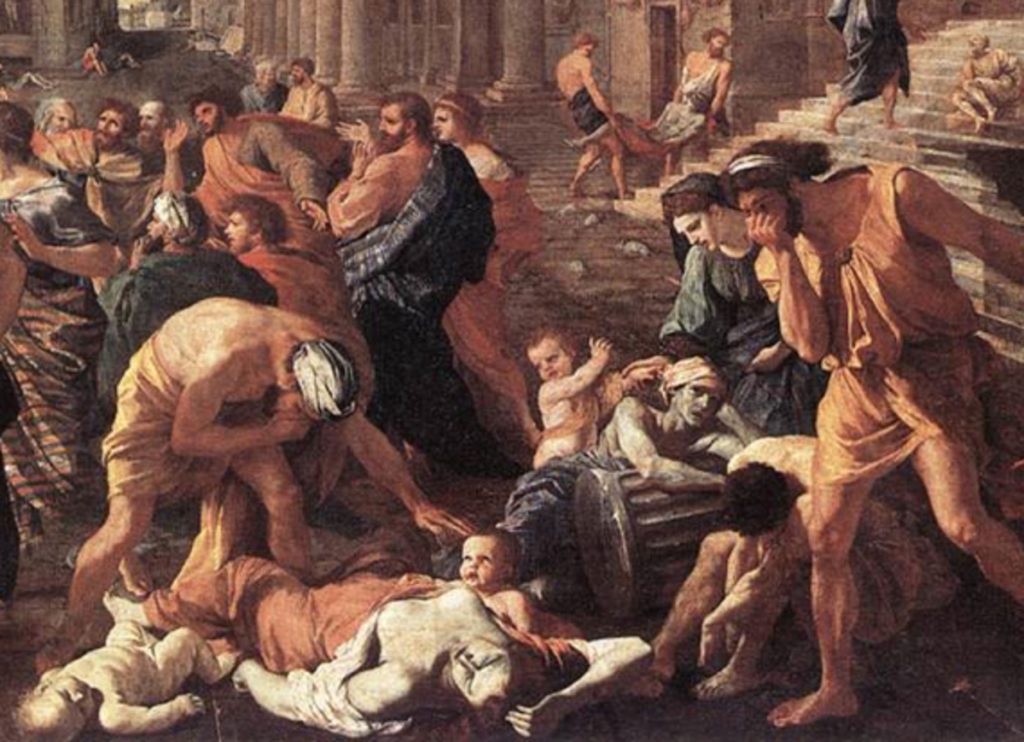 |
Wednesday, June 29, 2022, at 8 pm Eastern via Zoom
Disease & Death in the Early 1st Century CE
Julie Laskaris, University of Richmond
What were the most pressing health concerns of the peoples living during the first century CE?? What relief could they find from ancient doctors, herbalists, midwives, and others??
After an initial foray into the health problems of our earliest ancestors as background, this talk portrays the disease landscape of the early first century CE with a focus on Italy, drawing heavily on the evidence presented by the human remains from Pompeii and Herculaneum.
|
Insight into human suffering in this period and the attempts to alleviate it can perhaps deepen our understanding of biblical texts by offering a context for their stories of disease and sin, and of healing and salvation.
Julie Laskaris is Assistant Professor of Classical Studies at the University of Richmond
|
|
|
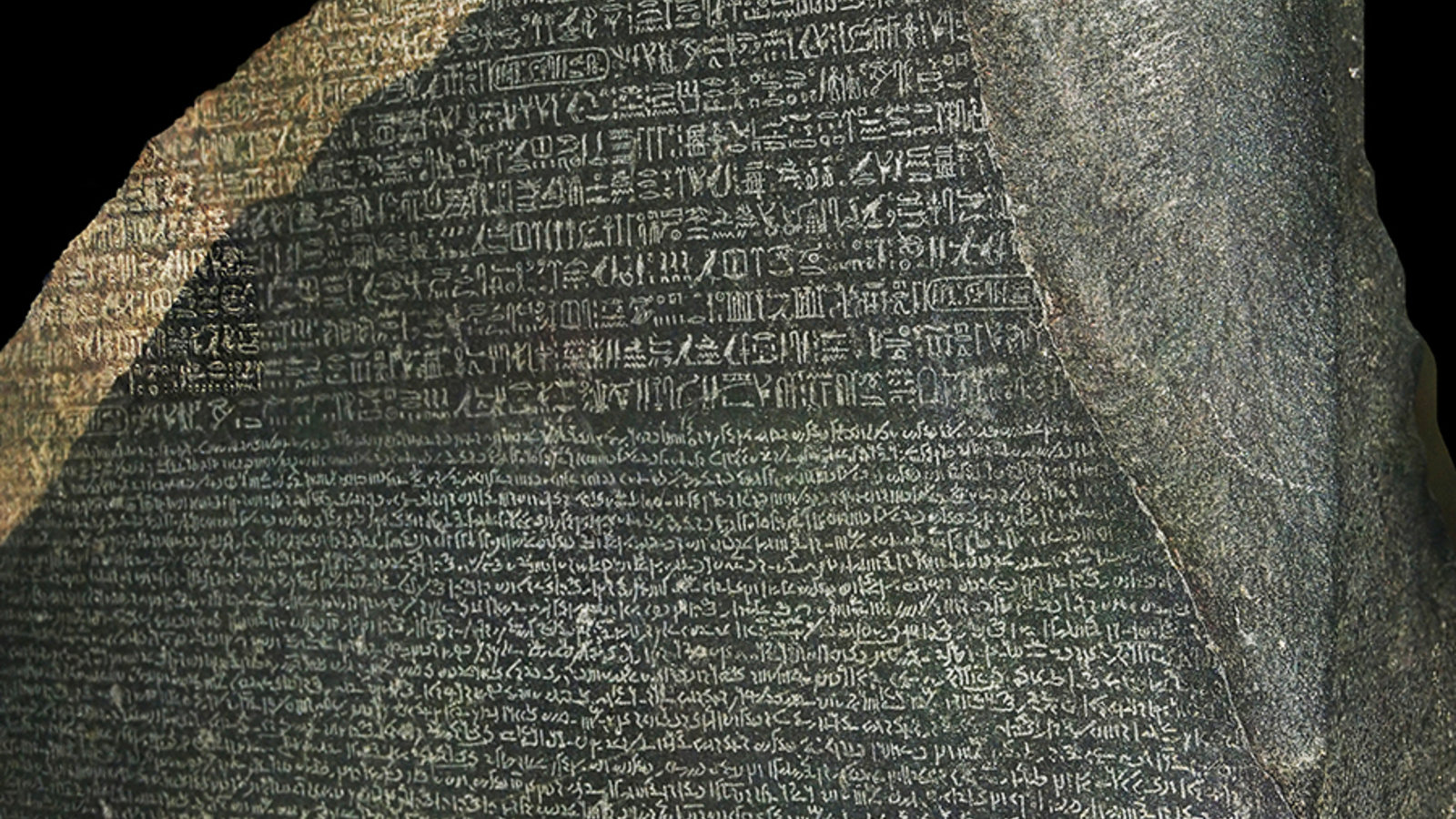 |
Wednesday, July 13, 2022, at 8 pm via Zoom
Riddle of the Rosetta
Diane Josefowicz
Sponsord by the DC Chapter of ARCE
In 1799, a French Army officer was rebuilding the defenses of a fort on the banks of the Nile when he discovered an ancient stele fragment bearing a decree inscribed in three different scripts: ancient Greek, Egyptian Demotic, and Egyptian hieroglyphs whose meanings had been forgotten for centuries. So begins one of the most familiar tales in Egyptology—that of the Rosetta Stone and the quest to decipher hieroglyphs.
At the center of the story were two very different protagonists: the polyglot French scholar Jean-François Champollion, who sought clues in ancient Egyptian history, geography, and culture, and the English doctor and physicist Thomas Young, who took more of a puzzle-solving approach to the mysterious script. Much more than a decoding exercise centered on a single artifact, the race to decipher the Rosetta Stone brought humanists and scientists together in a wild and unpredictable intellectual adventure.
|
This presentation will feature new and neglected archival evidence at the heart of this quest and situate the decipherment within broader nineteenth-century disputes about language, historical evidence, biblical truth, and the value of classical learning.
|
|
|
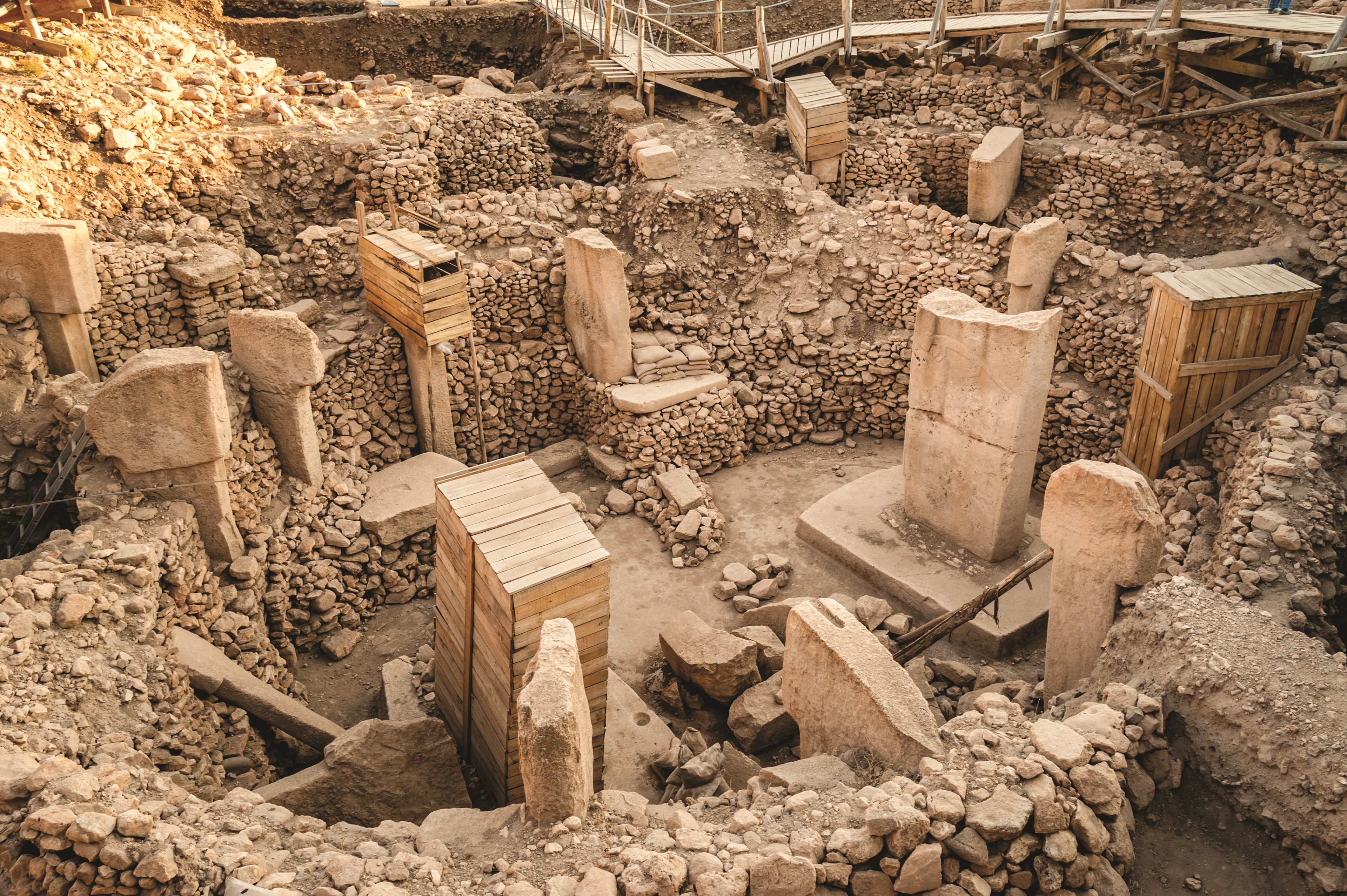 |
Wednesday, August 24, 2022, at 8 pm via Zoom
The Earliest Cult Centers in the World?: Göbekli Tepe and its Contemporaries
Jennifer Tobin
Since the time of their discovery in 1996, the ruins at Göbekli Tepe, in Turkey, have generated heated discussions among archaeologists. Excavations have revealed a series of large, circular structures, whose two central T-shaped pillars supported wooden roofs. Other, smaller T-pillars were incorporated into the buildings’ stone walls. Carvings of animals adorned these pillars – birds, bulls, foxes, spiders, snakes, and scorpions – suggesting that cultic activities occurred here.
Remarkably, these buildings were constructed in the 10th millennium BCE, at a time when the builders had not yet adopted the arts of agriculture and animal husbandry. This presentation reviews the controversies surrounding the function of the buildings, as well as the circumstances of their construction and demolition. It will also demonstrate that Göbekli Tepe is not a unique phenomenon, by presenting a recently discovered contemporary site, Karahan Tepe.
|
Jennifer Tobin, Associate Professor Emerita, Department of Classics and Mediterranean Studies at the University of Illinois at Chicago
|
|
|
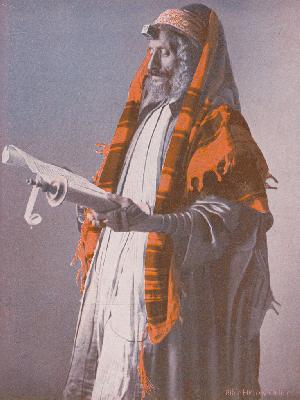 |
Wednesday, December 14, 2022, at 8 pm via Zoom
Strong Inscriptional Confirmations of People in the Hebrew Bible
Lawrence Mykytiuk
How many people named in just the Five Books of Moses have been confirmed by historians?
Bible-era inscriptions confirm the historical reality of more than 55 persons in the entire twenty-four book Hebrew Bible (Tanach). Most of these inscriptions are from the lifetime of the people in the Bible.
Of 43 Hebrew monarchs in the Hebrew Bible, 16 have been confirmed: 45% of the kings of the northern kingdom of Israel and 30% of the kings of Judah. These confirmations are about 3/8 of the Bible’s Hebrew monarchs. Also confirmed have been 25 of approximately 160 Gentile monarchs in the Hebrew Bible, or about 15%.
Finally, more than 14 royal officials, priests, and others have been confirmed as recorded in inscriptions; several more await publication. These persons are Hebrew, Assyrian, and Babylonian, plus Persian-empire governors who might not have been Persian. Examples illustrate the two ways researchers identify a biblical person in an inscription.
Lawrence Mykytiuk is Emeritus Professor at Purdue University
|
|
|
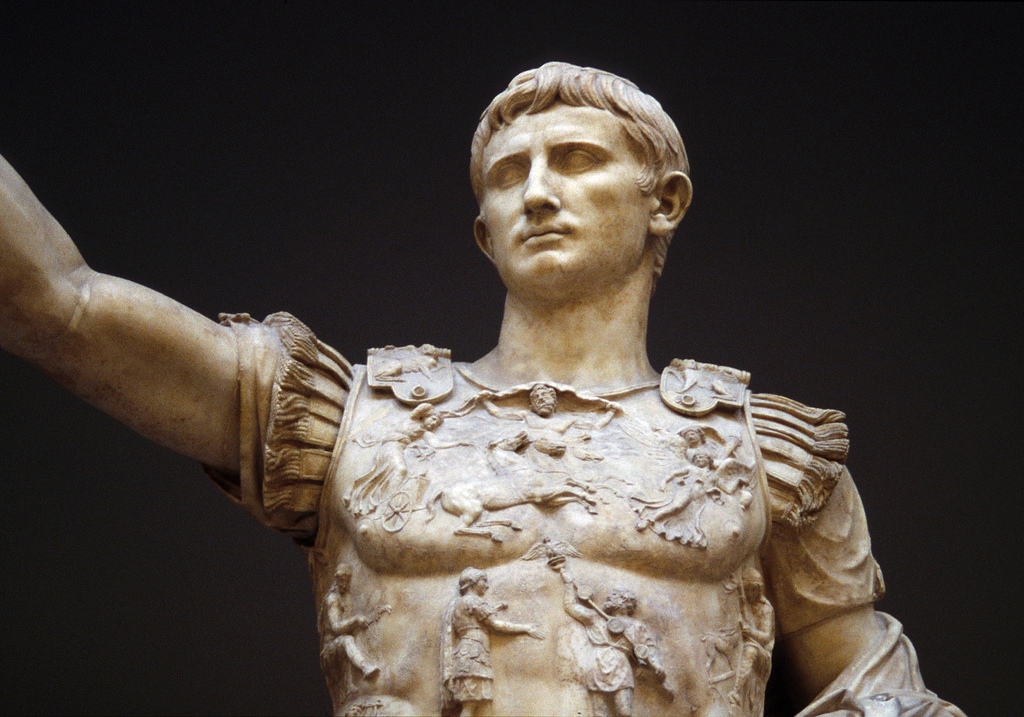 |
Wednesday, June 14 at 8 pm via Zoom
Emperor in Rome, Deity in the Provinces
Barbara Burrell
Sheer familiarity has blinded classicists and historians to the oddity of the Roman imperial cult. Countless cultures across the globe had rulers who were either gods (e.g. Egypt and Japan), descended from gods (Shang dynasty China, the Inca), or in some way super-human (the Yoruba, the Aztec). In all these cases, however, the king's divinity was most clearly recognized within the core region which he ruled, and most strongly manifested in his capital.
|
The Roman emperor, however, was supposed to be so honored only in the periphery, not in the center. Hailed as a god by provinces, cities, and citizens of his empire, he was allegedly treated as a mere mortal in Italy, and especially in Rome.
This lecture will re-open this question, and examine the material evidence that the living emperor presented himself, if not as a god, at least as a god-to-be in his capital, Rome.
Barbara Burrell is Associate Professor of Classics at the University of Cincinnati
|
|
 |
Wednesday, August 23, 2023 at 8 pm via Zoom
The First Half of History: A Virtual Tour of the Yale Babylonian Collection
Ekhart Frahm
Agnete Lassen
The Yale Babylonian Collection, founded in 1911, is one of the world’s main repositories of cuneiform texts, cylinder seals, and other artifacts from ancient Mesopotamia.
This virtual tour will provide glimpses into three millennia of Mesopotamian history and culture. Through a close examination of some of the collection’s most intriguing pieces – among them a manuscript of the Epic of Gilgamesh, a cuneiform letter sent by Ramesses II, and an early catalogue of medical treatises – participants will gain insights into the origins of elements of civilization that are still very much with us, from literary authorship (first ascribed to a woman) to counting, cooking, healing, and spying.
|
This presentation will explore the connections between Mesopotamia and the world of the Bible and demonstrate how new technologies help us better understand some of the most ancient testimonies of human history.
Ekhart Frahm is Professor of Near Eastern Languages and Civilizations at Yale University.
Agnete Lassen is Associate Curator of the Yale Babylonian Collection at the Yale Peabody Museum.
|
|
|
|
|
Wednesday, December 13, 2023 at 8 PM via Zoom
Angels in Ancient Jewish Culture
Mika Ahuvia
Angelic beings can be found throughout the Hebrew Bible, and by late antiquity the archangels Michael and Gabriel were as familiar as the patriarchs and matriarchs; guardian angels were as present as one’s shadow, and; praise of the seraphim was as sacred as the Shema.
This lecture follows how angels became foundational to ancient Judaism. Ancient Jewish practice centered on humans’ complex relationships with these invisible beings who acted as their intermediaries, role models, and guardians. By bringing non-canonical sources into view—incantation bowls, amulets, mystical texts, and liturgical poetry—it becomes evident that when ancient men and women sought access to divine aid, they turned not only to their rabbis, or to God alone, but often also to the angels.
This presentation allows these overlooked stories, interactions, and rituals to take center stage, and offers a new entry point to the history of Judaism, to the wider ancient Mediterranean and to Near Eastern world in which they flourished.
Mika Ahuvia is Associate Professor of Classical Judaism at the University of Washington |
|